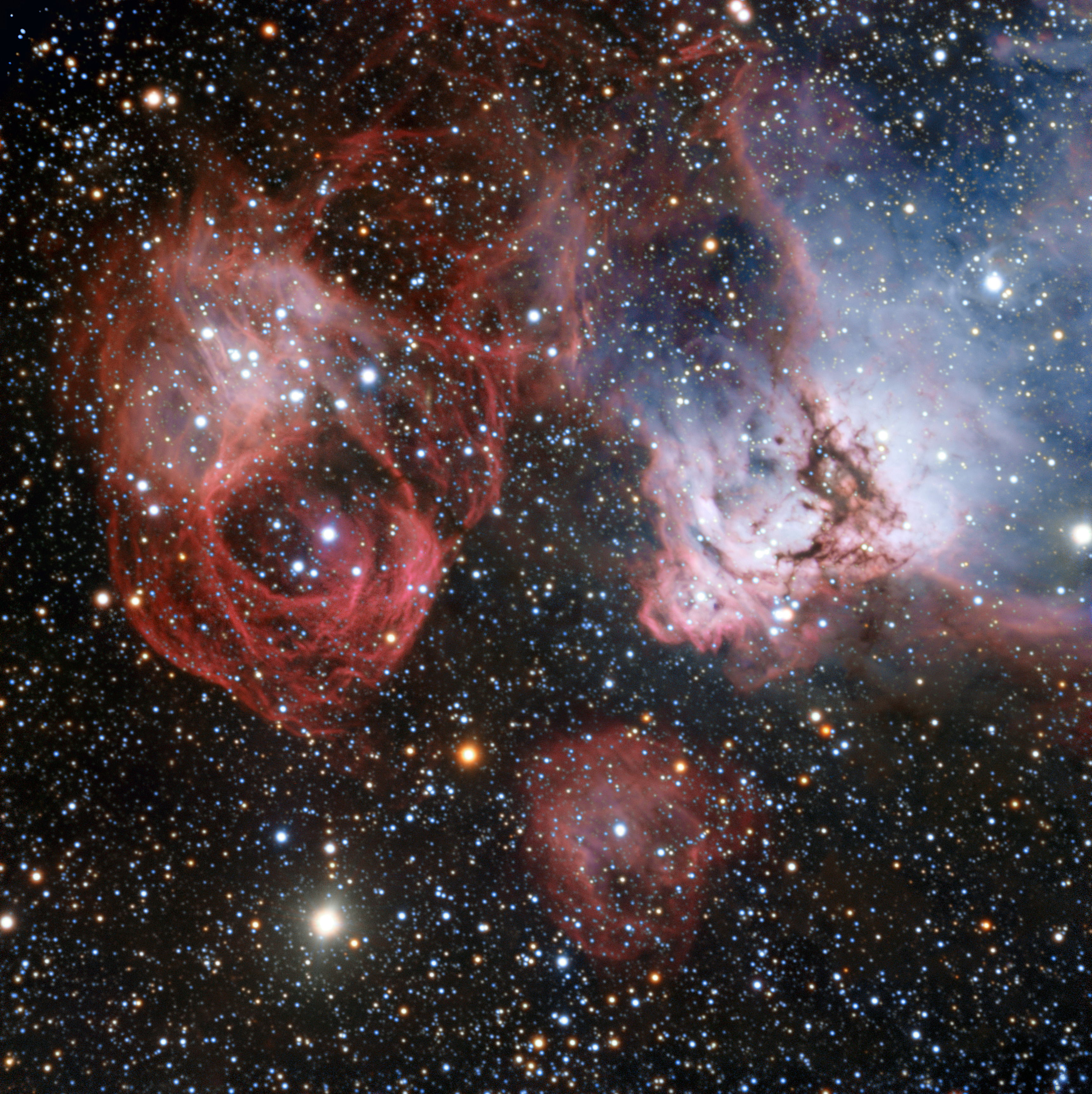Dragon's Head Nebula Is a Beauty, Not Beast, in Amazing Telescope Views (Video)

Stars in a little explored region of the Large Magellanic Cloud — one of the closest galaxies to the Milky Way — shine in an amazing new photo taken by a telescope in Chile.
The photo, released by the European Southern Observatory today (Nov. 27) and taken by the Very large Telescope, shows new, intensely hot stars molding their surrounding dust and gas into a nebula known as NGC 2035, or the Dragon's Head Nebula, about 160,000 light-years from Earth. You can watch a video flythrough of the cosmic image provided by ESO.
While the baby stars are on prominent display, the left side of the image also reveals the remnants of a supernova — an explosion that marks the death of some stars, ESO officials wrote in a release.
The huge pink, purple and blue cloud of dust on the right side of the photo is an emission nebula. Young stars emit radiation, causing the gas surrounding them to glow, but lurking within that gas are dark spots that create the "weaving lanes and dark shapes across the nebula," ESO officials wrote in a release.
"From looking at this image, it may be difficult to grasp the sheer size of these clouds — they are several hundred light-years across," ESO officials said. "And they are not in our galaxy, but far beyond."
The Large Magellanic Cloud is about 10 times smaller than the Milky Way at about 14,000 light-years across, ESO officials added.
Supernova explosions can be brighter than their host galaxies for a short time, but fade over the course of weeks or months. Once a massive star runs out of fuel, it can explode as a supernova after collapsing in on its own gravity. Other supernovas are created as a star steals matter from a stellar neighbor until a nuclear reaction takes hold.
Breaking space news, the latest updates on rocket launches, skywatching events and more!
The European Southern Observatory is supported by 15 different countries including Brazil, Austria, Denmark, France Finland, Germany and the United Kingdom among others.
Follow Miriam Kramer @mirikramer and Google+. Follow us @Spacedotcom, Facebookand Google+. Original article on SPACE.com.

Miriam Kramer joined Space.com as a Staff Writer in December 2012. Since then, she has floated in weightlessness on a zero-gravity flight, felt the pull of 4-Gs in a trainer aircraft and watched rockets soar into space from Florida and Virginia. She also served as Space.com's lead space entertainment reporter, and enjoys all aspects of space news, astronomy and commercial spaceflight. Miriam has also presented space stories during live interviews with Fox News and other TV and radio outlets. She originally hails from Knoxville, Tennessee where she and her family would take trips to dark spots on the outskirts of town to watch meteor showers every year. She loves to travel and one day hopes to see the northern lights in person. Miriam is currently a space reporter with Axios, writing the Axios Space newsletter. You can follow Miriam on Twitter.


